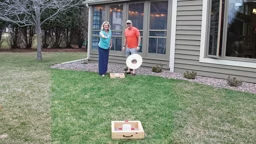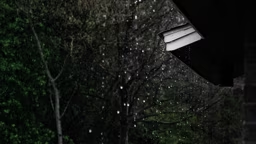The nightly appearance of the constellations and stars has been a source of endless wonder and intrigue through the ages. It’s a timeless topic. You’re as likely to find the stars mentioned in Shakespeare’s “Julius Caesar” as Mark Twain’s “Huckleberry Finn” as – well, yes – even Cabin Life magazine.
Cabins and the cosmos?
Sure! Cabins and stars, you see, is a match made in the heavens. When you’re at your cabin or lakehome, you’re very well positioned to stargaze. Away from city lights, the sky is darker, so the view is better. On a clear dark night you can see thousands of stars with unaided eyes. Consider yourself fortunate, since the majority of people – 99 out of 100, according to a recent issue of Discover Magazine – have never seen a truly dark night sky. Moreover, “two-thirds of Americans never see the Milky Way, the cumulative glow of all the stars in our galaxy.”
So go ahead, step outside your cabin into the frosty evening air, and look up at the expansive beauty of the glittering night sky, which is more spectacular now than in any other season.
Patience is key, because stargazing can be overwhelming and frustrating for the novice trying to find a specific star or constellation. In “Julius Caesar,” Shakespeare aptly described the night sky as, “painted with unnumbered sparks.”
Don’t let the sky overwhelm and discourage you, though. Relax, enjoy being together, take pride in each star sighting, share what you see with each other, and celebrate the incredible beauty and mystery of the cosmos.
Dinghies, Donuts & Flashlights
Let’s talk about what you need to get started. Begin with a comfortable reclining lawn chair, a child’s inflatable dinghy or an inflatable raft. Next, wear warm clothing, especially a hat and socks, and bring a couple of blankets. And don’t forget a very large thermos of hot chocolate and treats, maybe cookies or donuts.
You’ll need a flashlight to safely make your way to your viewing spot and to reference your star chart. It takes your eyes about 10 minutes to adjust to the darkness at night. So don’t ruin that by turning on a flashlight. If you need to read a star chart, paint the lens of a flashlight with red nail polish, or tape red cellophane or sheer fabric across the lens, and you won’t disturb your night vision when you use it.
The first and most important step in learning about the night sky is to study the constellations, but don’t try to learn them all at once. (Besides, many constellations are visible only during a particular season.) For help with this, you’ll need a star chart. We recommend the planisphere-type of chart because you can use it for your specific latitude. You can find planispheres in many book, hobby or education stores. For a quick solution, you can simply download monthly sky charts from various websites.
With planisphere in hand, the next step is to determine the four compass points. To ballpark your N, S, E and W, use the setting sun as your guide – as you face the setting sun (where the sun is dropping below the horizon), north is to the right, south is to the left, east is directly behind you and west is directly in front of you. This exercise will only give you exact results in September and March. If you want to be precise year-round, use an actual compass.
A Map to the Skies
Winter and spring skies are bejeweled with an incredible display of bright stars and constellations. Begin with the Big Dipper, the key to the night sky. When you are able to recognize it, you will have a guide to all the major constellations.
Visible throughout the continental United States, the Big Dipper is probably the most familiar celestial sight and is actually a contemporary name for the seven brightest stars of the constellation Ursa Major, The Great Bear. The Big Dipper is not a constellation, but is a distinctive star pattern (called an asterism) within Ursa Major. Three stars make up the Big Dipper’s handle, and four stars form its bowl.
First locate the Big Dipper, which is almost overhead and appears to be standing on its handle all winter long. Next, refer to your planisphere to follow the lines from the stars in the Big Dipper; they point the way to Arcturus and Regulus. Once you’ve identified these stars, the constellation patterns of Leo the Lion and Boötes the Herdsman are easy to find.
The constellation Leo the Lion, with its brightest star, Regulus, is easy to locate if you take the back two stars of the four-star bowl of the Big Dipper and draw a line out toward Regulus in the constellation Leo. Look for the asterism called the Sickle; it looks like a backward question mark, and that forms Leo the Lion’s mane. At the base of the Sickle is Regulus.
Now, if you extend a line from the two pointer stars, Merak and Dubhe, in the front end of the Dipper’s bowl, it will point directly to Polaris, the North Star, which is the end star in the handle of the Little Dipper.
Use the Big Dipper’s three-star handle. Draw a line along the handle and continue the arc in a curving line that will lead you to the orange-colored star, Arcturus. Arcturus means Guardian of the Bear. It is pale orange in color and more than 20 times brighter than the sun. Arcturus and the stars above it form the constellation Boötes, the Herdsman. Look for a pentagon shape forming the torso of the Herdsman.
Astronomers have a saying, “Follow the arc to Arcturus and speed on to Spica.” The arc is the curve of the Big Dipper’s handle, which points to Arcturus. Extend the Big Dipper handle’s curve beyond Arcturus and you will find Spica, which is in the constellation Virgo.
Stories Behind the Stars
Of the 88 constellations, most are linked to mythology. The heroes, tragedies and romance of mythology provide a fun basis for introducing astronomy. In addition to the many Greek names, others are Arabic, Persian and Latin. A number of the constellations identified on modern astronomical maps contain the same stars that were assigned to them 1,000 years ago. Recognizable figures like those of Orion and Cassiopeia adorn Egyptian pyramids and Sumerian tablets thousands of years old.
Orion the Hunter is one of the most striking figures in the sky, and was placed among the stars by the goddess Artemis, who mourned him. To prevent him from being lonely in the night sky, his two hunting dogs Sirius, in Canis Major, and Procyon, in Canis Minor, were placed in the sky with him, trotting at his heels. Sirius is the larger dog.
Orion with its three bright stars in a row can be easily seen in the winter sky. Three stars form his belt, two mark his shoulders and two more his feet, all forming a distinctive hourglass outline. Hanging from Orion’s belt are the dim stars of his sword. The three-star belt points down to Sirius, which is the brightest star in the night sky.
Cassiopeia and Cepheus were the king and queen of ancient Aethiopia. Their daughter was Andromeda. Cassiopeia hangs in her chair with her head downward half of the time as punishment for boasting of her daughter Andromeda’s beauty. When Cassiopeia and Cepheus died, from looking at Medusa’s head, the gods took pity on them and turned them into constellations.
Cassiopeia is in the same section of the sky as the Big Dipper and is easy to identify, with a shape like the letter W or M. Trace an imaginary line from the Big Bear’s pointers on past Polaris, the North Star. Cassiopeia is the same distance to the left of Polaris as the Big Dipper is to its right.
Andromeda, the beautiful princess, was saved from a horrible sea monster by Perseus. They fell in love and were married and later ruled Argos. When they died the gods put them both up in the night sky as constellations.
More than Stars
“Shooting stars” and “falling stars” are names that have been used to describe meteors for hundreds of years. A meteor is a bright streak of light in the sky produced by a fragment of rock or metal space debris (usually about the size of a grain of sand) passing through Earth’s atmosphere where it burns up. This fragment is called a meteoroid while in space, and a piece of debris that survives the trip through Earth’s atmosphere and reaches the ground is called a meteorite. On a clear, dark night you can see an average of three to four meteors every hour.
Other celestial objects that are fun to look at are the “nightly nomads,” or satellites. They can be seen with the naked eye; look for bright objects that move slowly across the sky in an arc. You can see satellites because they reflect the light of the sun. The best time to watch for them is a couple hours after sunset. Spot them by looking west to east in the western half of the sky and watch for a steadily moving “star” that usually does not blink. It could be a space shuttle, a space station, or spy or research satellite. Flashing lights traveling through the sky are airplanes. If you have binoculars, you should be able to distinguish the plane’s running lights.
Exploring the night sky will give you a spectacular view of the universe, as well as a thrilling and enjoyable experience for the entire family. And by introducing children to astronomy, you’re handing them a rewarding hobby that can become a lifetime of night sky-watching satisfaction.
The late, great Carl Sagan said it best in his book, “The Pale Blue Dot,” “It has been said that astronomy is a humbling and character-building experience. To me, it underscores our responsibility to deal more kindly with one another, to preserve and cherish the pale blue dot, the only home we’ve ever known.”












